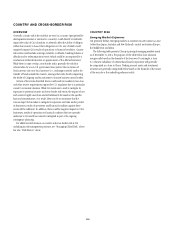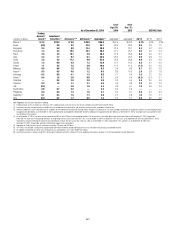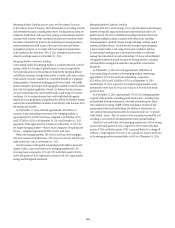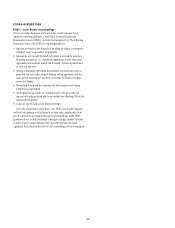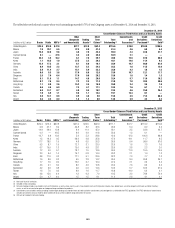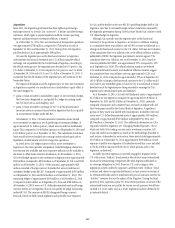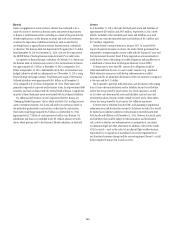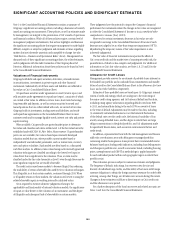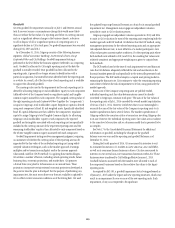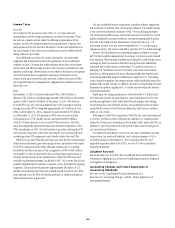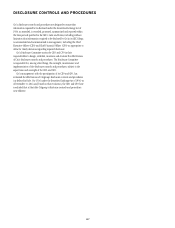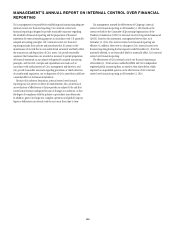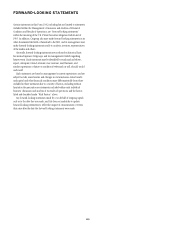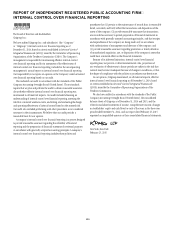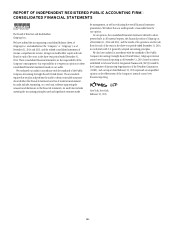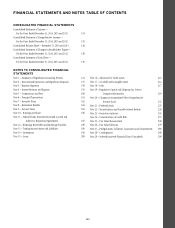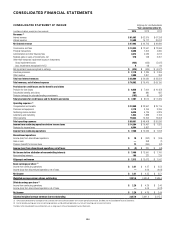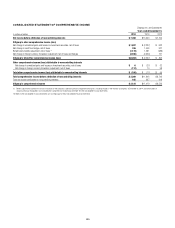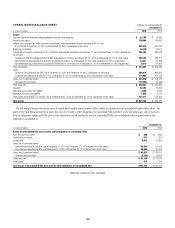Citibank 2014 Annual Report Download - page 143
Download and view the complete annual report
Please find page 143 of the 2014 Citibank annual report below. You can navigate through the pages in the report by either clicking on the pages listed below, or by using the keyword search tool below to find specific information within the annual report.126
Income Taxes
Overview
Citi is subject to the income tax laws of the U.S., its states and local
municipalities and the foreign jurisdictions in which Citi operates. These
tax laws are complex and are subject to differing interpretations by the
taxpayer and the relevant governmental taxing authorities. Disputes over
interpretations of the tax laws may be subject to review and adjudication by
the court systems of the various tax jurisdictions or may be settled with the
taxing authority upon audit.
In establishing a provision for income tax expense, Citi must make
judgments and interpretations about the application of these inherently
complex tax laws. Citi must also make estimates about when in the future
certain items will affect taxable income in the various tax jurisdictions, both
domestic and foreign. Deferred taxes are recorded for the future consequences
of events that have been recognized in the financial statements or tax
returns, based upon enacted tax laws and rates. Deferred tax assets (DTAs)
are recognized subject to management’s judgment that realization is more-
likely-than-not.
DTAs
At December 31, 2014, Citi had recorded net DTAs of $49.5 billion, a
decrease of $3.3 billion (including approximately $400 million in the fourth
quarter of 2014) from $52.8 billion at December 31, 2013. The decrease
in total DTAs year-over-year was primarily due to the earnings in Citicorp.
Foreign tax credits (FTCs) composed approximately $17.6 billion of Citi’s
DTAs as of December 31, 2014, compared to approximately $19.6 billion
as of December 31, 2013. The decrease in FTCs year-over-year was due
to the generation of U.S. taxable income and represented $2.0 billion
of the $3.3 billion decrease in Citi’s overall DTAs noted above. The FTCs
carry-forward periods represent the most time-sensitive component of Citi’s
DTAs. Accordingly, in 2015, Citi will continue to prioritize reducing the FTC
carry-forward component of the DTAs. Secondarily, Citi’s actions will focus
on reducing other DTA components and, thereby, reduce the total DTAs.
While Citi’s net total DTAs decreased year-over-year, the time remaining for
utilization has shortened, given the passage of time, particularly with respect
to the FTCs component of the DTAs. Although realization is not assured,
Citi believes that the realization of the recognized net DTAs of $49.5 billion
at December 31, 2014 is more-likely-than-not based upon expectations as
to future taxable income in the jurisdictions in which the DTAs arise and
available tax planning strategies (as defined in ASC 740, Income Taxes) that
would be implemented, if necessary, to prevent a carry-forward from expiring.
In general, Citi would need to generate approximately $81 billion of U.S.
taxable income during the FTCs carry-forward periods to prevent Citi’s DTAs
from expiring. Citi’s net DTAs will decline primarily as additional domestic
GAAP taxable income is generated.
Citi has concluded that two components of positive evidence support the
full realization of its DTAs. First, Citi forecasts sufficient U.S. taxable income
in the carry-forward periods, exclusive of ASC 740 tax planning strategies.
Citi’s forecasted taxable income, which will continue to be subject to overall
market and global economic conditions, incorporates geographic business
forecasts and taxable income adjustments to those forecasts (e.g., U.S.
tax exempt income, loan loss reserves deductible for U.S. tax reporting in
subsequent years), and actions intended to optimize its U.S. taxable earnings.
Second, Citi has sufficient tax planning strategies available to it under
ASC 740 that would be implemented, if necessary, to prevent a carry-forward
from expiring. These strategies include repatriating low-taxed foreign source
earnings for which an assertion that the earnings have been indefinitely
reinvested has not been made; accelerating U.S. taxable income into, or
deferring U.S. tax deductions out of, the latter years of the carry-forward
period (e.g., selling appreciated assets, electing straight-line depreciation);
accelerating deductible temporary differences outside the U.S.; and selling
certain assets that produce tax-exempt income, while purchasing assets that
produce fully taxable income. In addition, the sale or restructuring of certain
businesses can produce significant U.S. taxable income within the relevant
carry-forward periods.
Based upon the foregoing discussion, Citi believes the U.S. federal and
New York state and city net operating loss carry-forward period of 20 years
provides enough time to fully utilize the DTAs pertaining to the existing
net operating loss carry-forwards and any net operating loss that would be
created by the reversal of the future net deductions that have not yet been
taken on a tax return.
With respect to the FTCs component of the DTAs, the carry-forward period
is 10 years. Citi believes that it will generate sufficient U.S. taxable income
within the 10-year carry-forward period to be able to fully utilize the FTCs, in
addition to any FTCs produced in such period, which must be used prior to
any carry-forward utilization.
For additional information on Citi’s income taxes, including its income
tax provision, tax assets and liabilities, and a tabular summary of Citi’s
net DTAs balance as of December 31, 2014 (including the FTCs and
applicable expiration dates of the FTCs), see Note 9 to the Consolidated
Financial Statements.
Litigation Accruals
See the discussion in Note 28 to the Consolidated Financial Statements for
information regarding Citi’s policies on establishing accruals for litigation
and regulatory contingencies.
Accounting Changes and Future Application of
Accounting Standards
See Note 1 to the Consolidated Financial Statements for a
discussion of “Accounting Changes” and the “Future Application of
Accounting Standards.”


